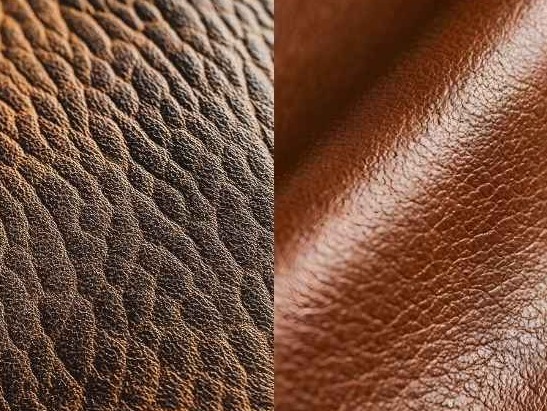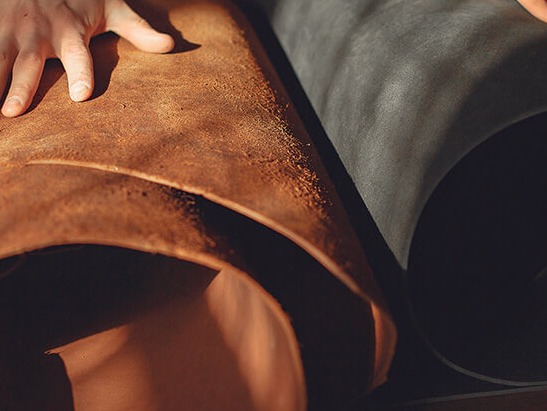
Now that we’re familiar with the types of leather available and their most common uses… Let’s dive deeper and explore the properties of leather.
Advantages of Leather
Let’s start with some of the advantages of leather:
- Malleability: This is a fundamental advantage, allowing us to work with it, shape it, and create the products we need.
- Unique style: Its appearance, smell, and material quality are unparalleled and impossible to imitate.
- Material resistance: Used since ancient times, leather is valued for its durability and long-lasting quality.
- Cold protection: It insulates your body temperature from the outside, making it the perfect material for winter.
These and many other benefits make leather unique, but… What gives it these characteristics?
To better understand this, we’ll discuss the properties of leather, dividing them into physical and chemical properties.
Chemical Properties of Leather
These properties are the most crucial and are defined by the internal structure of the leather, which can vary depending on several factors.
Fat Content
This property can vary depending on how the material is processed in the workshop and the personal touch added to it. Fat content gives leather its flexibility. The lower the fat content, the less flexible the material. For example, dry leathers used in certain products usually have very low fat content.
Moisture
This property depends on the conditions the leather is exposed to and significantly influences its physical properties, as we’ll see later.
The ideal moisture content for leather ranges between 12% and 14%.
pH Level
The pH measures the level of acidity or alkalinity in a material. The pH scale ranges from 0 to 14, with 0 being the most acidic and 14 the most alkaline or basic. For leather, the pH level typically ranges between 3.2 and 5.5, making it acidic. This level is achieved through a proper tanning process.
A pH level that is too low can cause the material to age prematurely.
Chromium Content
Chromium is present when leather undergoes mineral tanning. Leather with low chromium content may be less resistant, making it weaker.
Physical Properties
Some physical properties of leather are directly influenced by its chemical properties. Below, we explain the physical characteristics that make this material a favorite for many industries producing garments and items.
Water Resistance
Leather can be manufactured to absorb water, resist it, or become fully waterproof. Most leathers used in footwear, bags, upholstery, and leather goods industries offer a certain degree of water resistance, allowing the leather to get wet and dry while retaining its elasticity and shape.
It can also be made waterproof through specific processes, making this a highly versatile property.
Thickness
Both bovine and horsehide leather can vary significantly in thickness, as they can be split into layers. Thin layers are used for clothing, gloves, and small leather goods. Medium-thick leathers are used for upholstery, shoes, bags, and leather goods, while thick leathers are generally used for shoe soles.
Water Absorption and Release
Leather absorbs moisture and gradually releases it. In footwear, this property is particularly useful as perspiration is drawn from the foot into the leather and then evaporates through the outer surface of the shoe.
Water Vapor Permeability
Also known as "breathability," this property allows moisture and air to pass through leather. In footwear, this is especially important as foot perspiration generates significant moisture, which escapes through the leather, keeping the interior of the shoe dryer and more comfortable.
Aesthetic and Surface Texture
The wide variety of colors, textures, feel, smell, surface durability, and handling of leather makes it an extraordinary material.
Thermal Insulation
One of the advantages we mentioned earlier. Thermal insulation measures how quickly heat passes through a material. Since leather contains a large volume of air (a poor heat conductor), heat transfer through the material is significantly slowed, helping retain internal warmth during winter and protecting against the cold.
Malleability
Another excellent quality that makes leather so sought-after is its ability to be molded into various products and textures, allowing for intricate detailing. It can be made stiffer or more flexible while maintaining its new shape.
More news
Surely you've always wondered how to clean the leather of your favorite jacket to keep it in great shape for many years. In this article, we'll...
Have you considered buying a leather briefcase? Discover its main features and benefits in our article. And if you decide to, purchase directly...
Do you own any leather products? Do you want them to always be in perfect condition? Achieve it with our tips on how to clean leather.
If you’ve visited a store selling leather or skin products, you may have wondered what types of animals are used. Find out in our article.
We have updated the design and technology of our online store.






